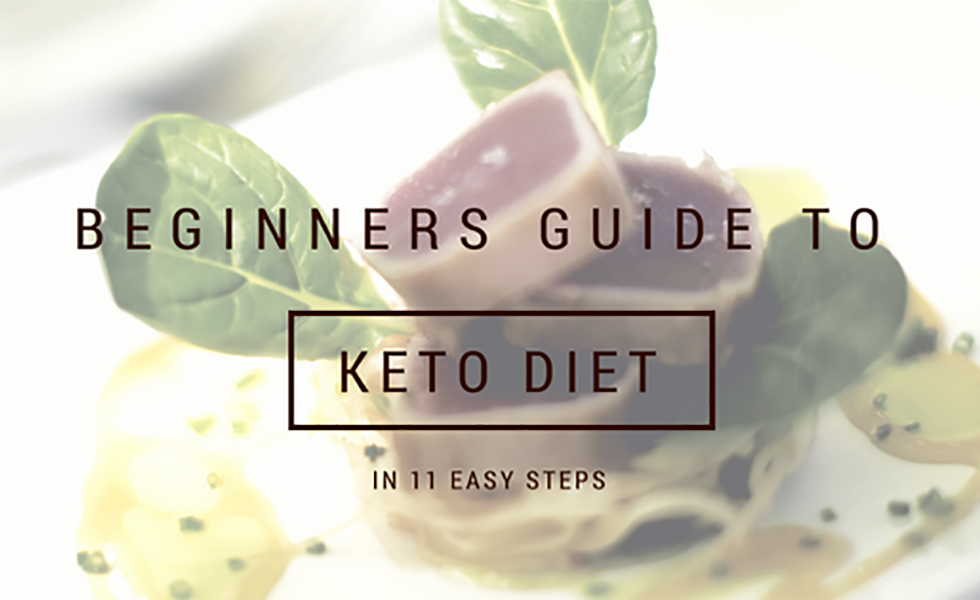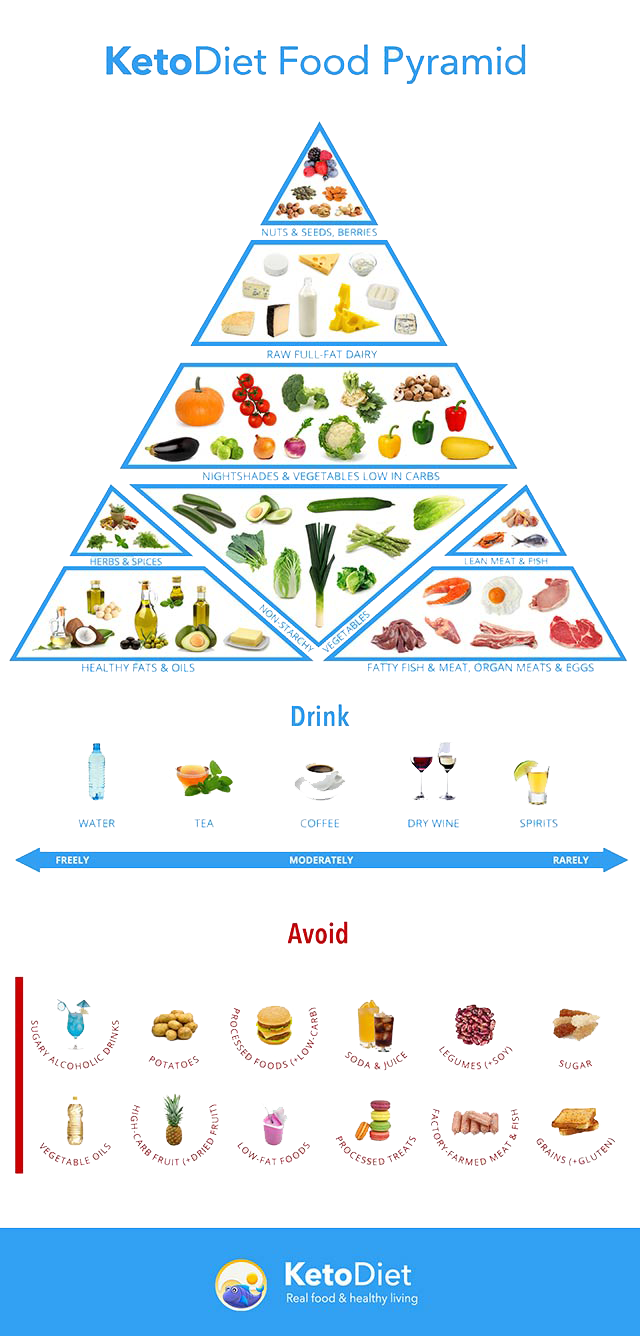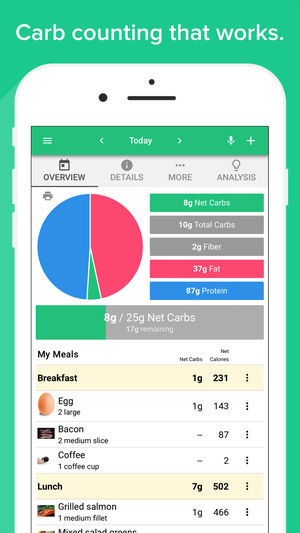THE KETO DIET
KETO diet for beginners in 11 easy steps

Farida, Keto Blogger
28 May 2018
Are you looking to start the keto diet and literally have no idea how or where to start? Are you confused or feeling overwhelmed by the load of information that’s out there on keto? If you answered yes to these questions then this article is for you.
So I want to share 11 steps that you can do to get started with keto. This is how I do Keto and have been doing it for almost 1 year and absolutely love this new way of eating. In 6 months I lost 16kg doing keto. I use to weight 64kg and now I weigh 48kg. I will never go back to eating a high carb diet again! If I can do this so can you!

Step 1: Do your research
The first thing I tell my family and friends that want to try the Keto diet is “do your research” This is a crucial step because if you go into Keto without any prior knowledge of say…what types of foods you should be eating and what you should be avoiding or, you haven’t researched about the possible withdrawal symptoms you may experience and trust me, these symptoms are not nice especially if you’ve been on a high consumption of carbs and sugars all this time. This is called the ‘KETO Flu”.
Prepare yourself by understanding about the Keto diet, what it is, how it works and what you can do to avoid getting the Keto flu.
Remember, this isn’t just any other diet. The Keto diet is different because your body undergoes so many changes during that first week, and as you start to cut out those high carbs and sugars from your diet, your body is slowing transitioning into a ketosis state where it essentially begins to burn fat instead of carbs for fuel. That my friend, is the great success to losing weight faster than you would on any other diet.
So please, please, please do your research…even if it’s just an hour of bedtime reading. You can even get the information you need by watching online YouTube videos from other people that have been successful with this diet.
Below is a video of Katherine Michelle who talks about the Keto diet for beginners on her YouTube channel. I remember watching her video when I was starting on Keto and Katherine really inspired and motivated me and I learnt a lot of the basics to get started. So I am sharing her video in the hope it will inspire you too.
Step 2: Write down your weight
On day 1 when you start the keto diet, I want you to write down your weight or record it somewhere. If you want to you can even measure your waist (above your bellybutton and below your rib cage). Don’t suck in your stomach, or you’ll get a false measurement. I personally didn’t do this as I was just too lazy to do both but you can do both if you want to.
So write down your weight and waist measurement so you know where you are starting from.
This was the great motivation booster for me because when I would go back on the scales a week or two later and see the drop in weight that for me was the biggest motivator to be able to see the progress I was making and see those numbers come down.
Step 3: Get rid of any junk food
You heard me right, it’s time to say goodbye to all those yummy tasty treats that have been taking up all that space in your pantry, fridge etc.
Yes you will have cravings for carbs and sugar so why make it harder for yourself by having those foods in the house.
Go through all your cupboards and clear out all the high carb foods (rice, pasta, bread etc), then get rid of all the heavily processed foods (chips, cookies, cake etc).
What if I’m the only one in the family doing Keto?
This is quite common so if you’re the only person doing keto then I suggest…and I did this too, is really discipline yourself to not eat any of those foods no matter how bad it gets. To help the urge when you do get cravings, have ready to grab keto snacks on hand or keep a jar of salted nuts on hand to curb that hunger.
Another idea is to have a separate cupboard for only your keto foods. That way when you need to grab something to eat you’re not having to look at all the other temptations sitting in the panty.
It’s so much easier to do keto when you get rid of these temptations.
Step 4: Know what food you can and can’t eat
This ties into Step 1 in some ways in that it’s important to know what food you can and can’t eat. If you’re eating a high carb food without realising it, what’s going to happen is you’re going to stall. By that I mean your weight won’t shift or, it’s going to take you longer to get into ketosis. Consequence…you’re going to feel frustrated, angry and let down and you’ll probably give up Keto thinking it doesn’t work or it’s not right for you.
Below is a Keto diet food pyramid of what you can eat on keto and the foods you should avoid:

Image by Martina Slajerova, via https://ketodietapp.com
You can pretty much eat any meat just make sure you stay away from processed meats and always read the nutrition label. If you’re buying meats that are marinated again, check the label, they usually have sugar added to them.
You also want to buy meats that are grassfed (beef, lamb, goat, venison).
Eat lots of leafy green vegetables, spinach, kale, broccoli, cauliflower all these are healthy low carbs vegetables.
Stay away from sweet or starchy vegetables like potatoes, peas, corn, sweet potatoes etc. as these are high in carbohydrates.
Avoid Fruits as they contain sugars except for tomatoes and berries that can be eaten in moderation.
Stay away from all wheat products (bread, pasta, rice, cereals etc.) There are alternatives such as coconut flour and Almond flour that you can buy instead that have fewer carbs.
Finding all these foods in your grocery store will get easier as you get use to knowing what food you can and can’t eat so don’t worry or feel overwhelmed by any of this.
Step 5: Meal plan for the week
When it comes to eating well on the keto diet, preparation is the key to success.
Write a weekly meal plan (5 or 7 day it’s up to you). Weekends are usually the best time to get a headstart on the busy week ahead.
Consider grocery shopping on Sunday so you have everything ready and stocked up in the fridge and pantry ready to go.
Many things such as spiralising vegetables can be done at the weekends and stored in airtight bags or containers in the fridge.
As part of the meal plan include a fat bomb recipe. One recipe should last you the entire week and will really help you out when you have sweet cravings or you’re simply not reaching you’re fat macros.
Some people intermittent fast and then they just have 2 main meals. My advice…Don’t start too quick on doing everything. In the beginning start with your 3 main meals breakfast, lunch and dinner and begin cutting out those carbs and sugars in every meal. In a few weeks once your body has adapted to burning fat you will start feeling less hungry and automatically you won’t feel like eating breakfast. That’s when people start to intermittent fast not because they plan to do it but it just works out that way. That’s how it happened for me.
For me my last meal will be at 6pm and when I wake up I will have my bulletproof coffee and then intermittent fast till around 2oclock in the afternoon which is when I will eat my first main meal. So just do what feels right for you.
In the beginning you want to keep it simple. What I did was eat the same foods all week. So I will eat the same breakfast, lunch and dinner all week. Click here to see my keto diet meal plan for beginners.
Stick to your list of keto friendly foods when you are doing your meal planning. See step 4
Step 6: Grocery shop for keto ingredients
Once you have your meal plan written up you want to go out and shop for all the ingredients. I like to make my meal plans weekly, it just makes it more manageable and I feel more in control when I know exactly what I have to cook with in the house.
Here are some Key ingredients you might want to grab to incorporate into those recipes:
High fat dairy including:
Cheese
Butter
Heavy whipping cream
Important Note: Make sure you don’t pick up the low fat ingredients. These are usually placed on the shelves together and that mistake can easily be made so always check you’re buying the high fat product.
Ghee (I love to cook with ghee you can get it from any Indian store) if you can’t get hold of ghee then cooking oils like extra-virgin olive oil, coconut oil is also fine.
Vegetables – lots of leafy greens, low carb vegetables like broccoli, cauliflower, zucchini etc.
Meat such as Bacon. I don’t eat bacon but it has huge amounts of fat so if you like it go ahead and buy some.
Eggs – with 0 carbs you can’t go wrong. Eggs are so versatile and a staple ingredient in the keto diet.
Nuts are great for snacking. On keto you can eat almonds, macadamia nuts, walnuts, pecans, brazil nuts and hazelnuts. All these can be eating in moderation.
Also when you are at the store pick up some chicken broth too. That’s going to really help you in the starting weeks of keto as your body loses a lot of water and with it electrolytes. Chicken broth is an easy and tasty way of replacing them.
Step 7: Calculate your macros
At the beginning you will need to figure out your macros, so how much protein, how much fat and how much carbohydrate you can consume in a day.
“Macronutrients are what make up the caloric content of a food,” says McMahon. Sometimes referred to as “macros,” the three categories of macronutrients are carbohydrates, fat, and protein. URL: https://www.popsugar.com.au/
KETO Macros
The following bar counters show you the percentage of the three macronutrients (fat, protein and carb) that make up the daily calorie intake on a keto diet.
- Fat 75%
- Protein 20%
- Carb 5%

For your body to reach ketosis you need to be under 20g or less net carbs a day so you can switch your body over from burning carbs to burning fat instead as fuel.
How does it work?
Your body will see that you have depleted its glycogen stores and that you need to go ahead and start burning fat to use as the main energy fuel now. This is what’s called a state of ketosis when your liver starts producing ‘ketones‘.
This is why it’s important to know your macros and stick with them in order for this diet to be successful.
Make sure you are eating enough protein to reach you protein macros for your height and your build.
Remember, you want your body to burn the fat that’s already on you so you don’t have to exceed your fat goals in the beginning.
How do I calculate my macros?
The best way to calculate your macros is to get an app. The one I use is called ‘carb manager’ and it’s very user-friendly and easy to use.
Carb manager has over 1 million foods logged into the database so when it comes to adding foods to your daily log it is really easy to find common foods, supermarket foods and restaurant dishes. It even has a barcode scanner so you can scan new products and add them too.

Carb Manager App Interface, via http://carbmanager.com/
So now you have your macros what do you do with them? That leads us onto step 8.
Step 8: Track all your food
In the first few months of doing keto you want to track all your foods you consume on a daily basis. This is not as hard as it sounds.
Enter this into the carb manager app that you downloaded in step 7. Once you have foods logged into ‘Carb Manager’ adding foods will become faster and easier.
Try to stick to your macros as close as you can and be careful in the beginning not to exceed your fat macros at this stage in the diet. You want your body to burn the fat store you already have so it’s not necessary to exceed those fat macros until you lose the existing fat.
Once you are keto adapted and your body starts burning fat as its primary source of fuel for energy, then exceeding your fats is fine.
Make sure you drink lots and lots of water. Water helps you lose weight faster and you need to drink more on Keto as your body won’t retain water as it normally would on a high carb diet. This is the reason why people have a significant drop in weight in the first day or two. This is called ‘water weight’ loss.
Step 9: How to prepare yourself for the keto flu
We talked a little about the keto flu in step 1. The keto flu is horrible and yes I went through it and, it felt like I was dying. I remember being curled up on my bed on day 3 in agony from stomach cramps and feeling lightheaded and nauseated. I had to call my husband to come home and look after the kids that’s how bad it got.
The first thing he told me was my electrolytes were low and I needed to replace these fast. I took a handful of salt and ate it and instantly started feeling better.
If you do the keto diet then you will need extra electrolytes because when you stop eating carbs your body loses water from the body a lot faster whereas on a normal carb diet your body retains that water. It’s similar to what happens to your body when you get diarrhea or vomiting. You lose those electrolytes and you need to replace these as soon as you can.
Not only should you be drinking a ton of more water, you also need to be supplementing your sodium, potassium and magnesium. These are your 3 electrolytes.
Potassium comes from a lot of the foods that we already eat on the keto diet so supplementing this is not as necessary as the other two electrolytes sodium and magnesium.
Go to the pharmacy and buy yourself some magnesium and have this daily or twice daily to begin with, and take around 5oomg a day. I take 1 tablet of Nature’s way magnesium chelate 100s.

Nature’s way magnesium chelate 100s, provides 200mg elemental magnesium per tablet
You will also need sodium (salts). You will need about 4000 milligrams of salt a day. The best way to get this is to add salts to all your meals, salt on your eggs, salt on your salads, vegetables etc. If you have the keto flu go ahead and eat salt by itself if you have to like I did or, take some warm water in a glass add a tsp of salt, stir and drink it. Your probably not going to like the taste and that’s ok, just gulp it down in one go. Do this maybe two times a day in the start.
Chicken broth is a tasty alternative. I buy the chicken broth in the grocery store. Make sure you don’t buy the salt reduced broth and look for the ones that contain potassium too.
Another symptom of the keto flu might be leg cramps. Again the main reason for this is due to lack of electrolytes in the body so have your salts and magnesium supplements.
If you do get the Keto flu and chances are you probably will, don’t feel discouraged. Remember, its worse in the beginning but it does get easier as your body transitions and becomes fully fat adapted. Trust the process and stick with it.
Step 10: Be patient with exercise
I get it you’ve set yourself this goal of losing weight and you’re ready and motivated to start doing keto and to start your workout right? Please don’t do everything at the same time. I made this mistake and on day 3 I was suffering from the Keto flu because I had exhausted my body.
Keep it simple in the start by cutting out those carbs and sugars. This is not just another diet, this diet is going to change the way your body processes fat and during this process you may experience side effects as your body is used to getting its energy from carbs.
Remember once your keto adapted and over the keto flu stage and you’re feeling more confident with what you can and can’t eat, you can slowly start introducing exercise into the diet as well. In step 9 we talked about electrolytes and the importance of it. When you exercise you lose water through sweat and with it the electrolytes, so be mindful of this and adjust your macros accordingly.
Step 11: Make a commitment
Find your motivation. A lot of people start well and they slowly steer away, get bored and go bad to old habits. It’s easy to do however, if you set yourself a clear goal and more importantly a timeframe for that goal, you have a better chance of success.
For example, my goal was to loose enough weight to look good again. I would see photos of myself how I looked 3 years ago and really wanted to look that good again.
Initially I had set myself a mini goal of 4 weeks because I wanted to look good for a party I was going to. You can do the same.
Try the diet for 4 weeks and see how you feel after it. Follow all the steps above. I think you will be surprised.
It really helps you stay on track when you set yourself long term or short term goals to achieve and that also gives you motivation because then maybe you can go shopping for a new outfit when you’ve lost a little bit more weight, it’s a bit like rewarding yourself for staying on track.
Conclusion
You have all the resources to go ahead and start keto. It’s not crazy hard it is actually very simple. It just takes time to get use to this new way of eating and understanding what foods you can and cannot eat and trust me as you carry on your keto journey that will become common knowledge to you. You will learn to check the labels of all foods and check the carbohydrates and sugars on everything that you are consuming. You are training your mind and body and this will take some time so be patient and you will get there.
You can make this keto diet as simple or as complex as you like. Start simple till you get use to what you can and can’t eat and then you can start experimenting with ingredients and whipping up some awesome dishes. The good thing about this diet is it gets you to eat all the foods that we should be eating anyway whether you’re on a diet or not. All those leafy green and low carb vegetables like broccoli and cauliflower are so good for you and we tend to avoid them and go for all the processed foods instead that then effect our health in the long run.
We hope you have found this article helpful. If you have any questions or comments, please leave a reply below and I will get back to you.
More Articles
No Results Found
The page you requested could not be found. Try refining your search, or use the navigation above to locate the post.
